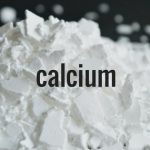Organic vs. Inorganic Phosphates | re-post
Inorganic phosphates and organic phosphates can get confusing. This is a re-post from an article on Orenda’s website. It pertains to our audience too, so we thought we would share it, and give credit where credit is due. The original article can be found here.
Different types of phosphates
Did you know there are many different types of phosphates? In the water treatment business, most of us use “phosphates” as a general term to describe them all…but sometimes that can be misleading. There are so many types of phosphates and they react differently.
Let’s start by dividing all types of phosphates into two main categories: organic phosphates, and inorganic phosphates.
Organic Phosphates (Organophosphates)
Organic phosphates are esters of phosphoric acid, also known as orthophosphoric acid (H3PO4). Okay…so what are esters? An ester is what you get when an organic substance (usually a hydrocarbon or alkyl) replaces a hydrogen atom in an acid. This swap (Hydrogen for an organic hydrocarbon or alkyl) makes the substance change from inorganic to organic.
Those of us who are not organic chemistry experts refer to esters as fats and oils. Natural fats and essential oils (like Omega 3) are esters of fatty acids.
According to the National Institute of Environmental Health Sciences (a division of NIH), organophosphates are a key ingredient in about half of known pesticides and nerve agents. To be clear and distinguish this from the previous statement, we are now talking about organic phosphates specifically…not other esters (fats).
Click here to see examples of organic phosphates. Fortunately, organic phosphates are not common in swimming pools.
Inorganic Phosphates
Now let’s get to the more common phosphates that we deal with in the water treatment business: inorganic phosphates.
“In biological systems, phosphorus is found as a free phosphate ion in solution and is called inorganic phosphate, to distinguish it from phosphates bound in various phosphate esters. Inorganic phosphate is generally denoted Pi and at physiological (neutral) pH primarily consists of a mixture of HPO2-4 and H2PO–4 ions.” – PubChem CID 1061
We can divide inorganic phosphates into two categories: orthophosphates and condensed phosphates.
Orthophosphates
Orthophosphates are also called reactive phosphates. They are the most common in water treatment situations, as they directly contribute to the eutrophication of a body of water. Orthophosphates are found naturally in the environment and in water but are also artificially added to fertilizers.
In swimming pools, orthophosphates are the most prevalent of all types of phosphates. These are the ones that eutrophy water (meaning they are an essential nutrient for plant growth…specifically algae). Usually, when people in the water treatment business talk about phosphates, they are referring to orthophosphates.
Orthophosphates do not directly interact with chlorine. They cannot be oxidized. The only ways they can be removed is with a phosphate remover product or with reverse osmosis filtration (R.O.).
Click here to see examples of orthophosphates. You’ll notice a substance called phosphonic acid. Phosphonic acid is commonly used in drinking water treatment as a sequestering agent for metals and minerals (like calcium). Phosphonic acid is also used in pool chemicals used for stain and scale removal/prevention.
Condensed phosphates
Condensed phosphates are types of phosphates that contain salts, metals or minerals like calcium. Within this category are pyrophosphate, metaphosphate, and polyphosphate. Calcium phosphate (Ca(H2PO4)2) is a good example of a condensed phosphate. These types of phosphates are naturally occurring, but can also be synthetically combined to be used in various industries.
For the example of calcium phosphate, our bones and tooth enamel are strengthened by it. In swimming pools, calcium phosphate can harden sand and regenerative DE filter media like concrete. It can take a jackhammer to crack through it.
Conclusion
There are too many variations of phosphates to write about. It seems like any combination of P, O, H and numbers, + and – signs can be a type of phosphate. Given that we are not chemists, it gets daunting. We know. Hopefully, this article has simplified the chemistry so it is easier to understand.
As it pertains to water treatment, orthophosphates are the primary type we encounter. We recommend removing phosphates to keep them below 500 ppb (µg/L) for easier, proactive water treatment. If you do come across organophosphates or condensed phosphates, they could give you more trouble.




